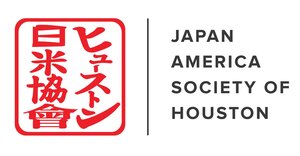A regular Saturday morning in Kanagawa on the Katase Higashihama Beach under the mid-April sun? Not quite!
On this day, archers dressed in traditional regalia outnumbered surfers, transporting those gathering on the sandy shores back to a time when yabusame defined the skill of a samurai warrior.
Courtesy of Olivia S.
Courtesy of Olivia S.
WHAT IS YABUSAME (流鏑馬)?
Yabusame (pronounced “yah-boo-sah-meh”) is a type of traditional Japanese archery performed on horseback. Archers are required to shoot at three targets on their left while riding horses that gallop over a distance of about 700 feet or more.
Records indicate yabusame dates back to the end of 6th century and was part of a religious ceremony carried out during seasonal festivals.
The first Shogun, Minamoto no Yoritomo, is said to have turned yabusame into a martial art that samurai warriors were encouraged to master and actively use in battle.
With the arrival of western rifles in the second half of 15th century, yabusame became virtually ineffective in battle.
Once peace was established in the early 1600s, yabusame was relegated to the status of traditional Japanese martial art.
Competitive forms of yabusame are still practiced today. However, traditional Japanese archery has become the centerpiece of a sacred Shinto ritual that involves arrows being released as a prayer for peace, rich harvests and good health.
(For more details on Yabusame, please visit the official page of The Japan Equestrian Archery Association).
YABUSAME ON THE BEACH
Beautiful waves of local Sagami Bay, dotted with surfers and sail boats, form the backdrop.
The beach is edged with nearly 1,000 feet of rope, demarcating the yabusame riding course.
An eager audience gathers early, lining the course with picnic mats and blankets while awaiting a wonderful spectacle.
During the first hour of the event, the public can enjoy a parade of individuals depicting the first Shogun and his 13 Lords (based on the popular period series you must know plenty about by now!). Humans and horses alike proceed along a designated path in colorful regalia — over 40-pounds of armor, including helmets, swords, headpieces, and body adornments.
Courtesy of Olivia S.
The parade is followed by a Shinto ritual traditionally associated with yabusame in which a blessing is conferred on the event.
From noon, an archer on horseback performs the Tencho Chikyu ritual in which an archer draws his/her bow in a manner that creates a circle resembling the full moon. The archer’s arrow is first aimed at the sky in a prayer for peace and then aimed at the ground in a prayer for rich harvest. The arrow is never released, adding grandeur to the performance while showcasing the archer’s skill.
Finally, the stage is set for the main show to begin!
Five horseback archers (four gentlemen and one lady) are given five runs. During each run, the archers shoot towards three targets positioned 2.6 feet apart, requiring them to pull their second and the third arrows while galloping along the sandy riding course.
To ensure a thrilling performance, the targets are changed between the first three runs and the last two runs.
The targets used in the early runs were 1.8 feet squares decorated with five colored circles symbolizing the five grains, and made of Japanese cypress. The targets used in the later rounds were nearly half the size and made of a much softer wood. This allows them to shatter when hit — much to the delight of the public.
These two types of targets also separate the religious ritual runs from the competitive runs.
Courtesy of Olivia S.
The archers on horseback perform in the same order each time — from the most senior to the most junior.
Although the first archer is always the most skilled competitor, it is still exciting to watch the full-speed gallop of the archers. Often time the horses are galloping at a speed that makes it difficult for the archers to pull their arrows and position themselves in time to shoot at each target. A slower-paced gallop seemed to improve the accuracy of the archers.
In one instance, the horse and its archer fell while galloping! But when the archer, seemingly not caring at all about his own possible injuries, carefully examined the horse and determined no injuries were inflicted, the audience breathed a collective sigh of relief and cheered them on with applause.
With many public events still being postponed or scaled back due to the lingering pandemic, attending this yabusame event filled one with energy and delight. So, despite the limited publicity around the young event, word-of-mouth publicity will undoubtedly bring even a greater audience at its next (the third!) edition.
Bright & Sustainable
Matching this colorful step back in time was another local event - one involving real-life canvases of 23,000 petunias, nemophilas, marigolds and many others — around 20 types of flowers.
Under the simple theme of “bright,” Yokohama Red Brick Warehouse succeeded in bringing brightness to the many days still being spent indoors, as well as hope for a brighter future rooted in sustainability. The reuse of scrapped cars, tires, jeans or TVs allowed the once-waste objects to come back to life in a fun, photo-worthy manner!
Courtesy of Olivia S.
Courtesy of Olivia S.
Courtesy of Olivia S.
Courtesy of Olivia S.
Courtesy of Olivia S.











